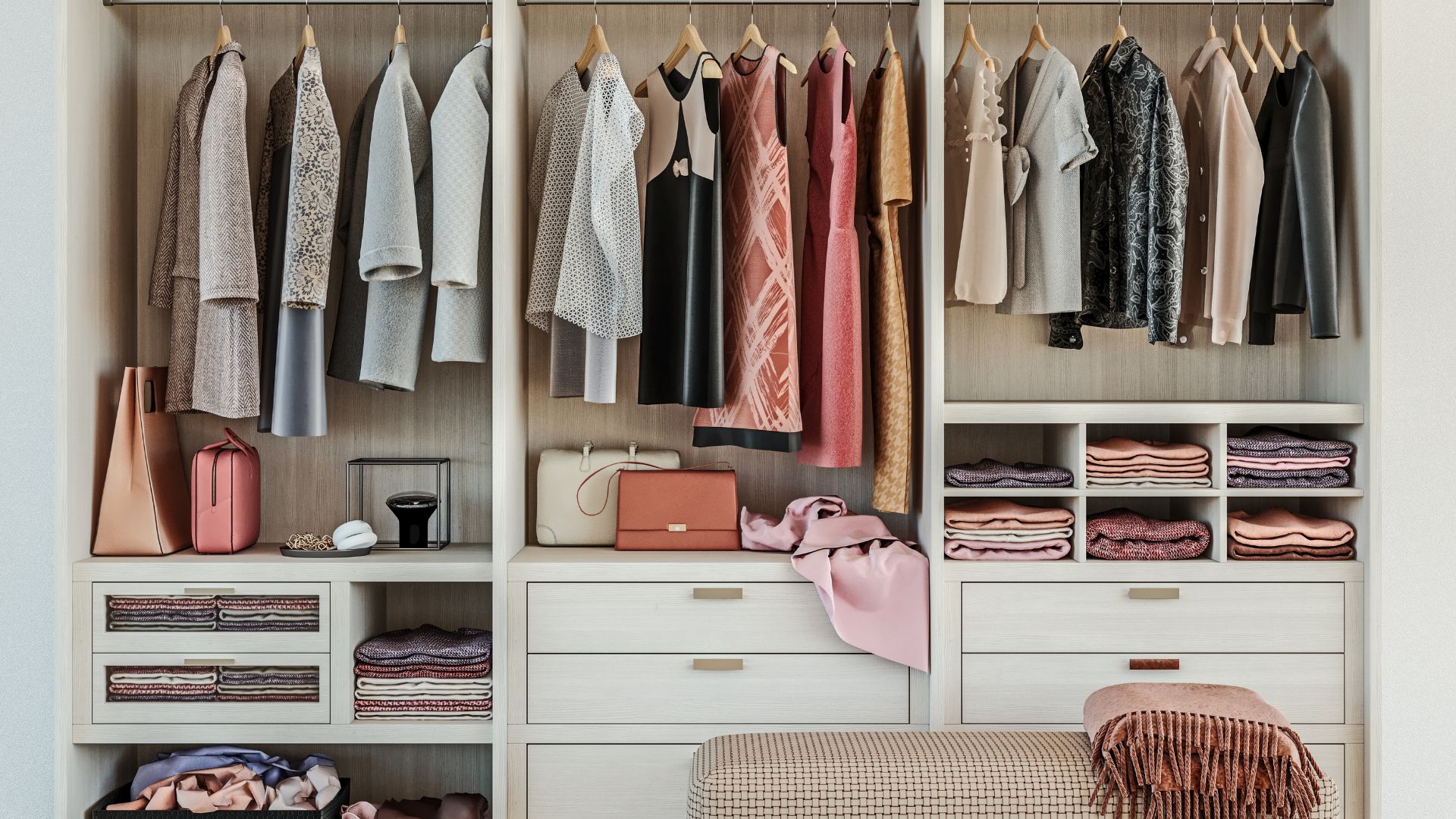
Decluttering clothes is probably one of the trickiest jobs when it comes to clearing out your home, as there's a lot of sentiment tied up in your closet.
"[It] can feel pretty overwhelming because it's not just about tossing out stuff you don't wear anymore," says Di Ter Avest, a home and lifestyle professional organizer. "Often, it makes you realize that a lot of what you're holding onto belongs to a past version of yourself. Your style might have changed, or your lifestyle might be different now, and those clothes are just taking up space. Letting go of pieces that were once a big part of your life isn't easy, but making room for what fits your current body and needs is so worth it."
"The process can be therapeutic, helping you let go of the past and embrace the present," Di adds. "By decluttering, you make space not only in your closet but also in your mind, reducing stress and decision fatigue."
Even the best closet organization ideas can't help you if you have a wardrobe that's just too full, so if you think it's time to finally clear out some space, these are the secrets to decluttering clothes organizers want you to know.
1. Set Clear Goals

Decluttering and minimalism go hand in hand and to achieve such — you'll want to let go of the things that no longer hold a place in your space. But before doing so, set yourself a goal to do just that.
Di says: "Before you start, define what you want to achieve. Are you aiming for a minimalist or a capsule wardrobe, or do you simply want to make more space? Having a clear vision will guide your decisions."
2. Sort by Category

Closet organizers are a great way to sort your clothing by category. Di tells us: "If you don't get overwhelmed easily and have the time to tackle your closet in one go, you can work on one category at a time — for example, tops, pants, dresses."
She continues: "This method, popularized by Marie Kondo, helps you see the volume of each type of clothing you own and make more mindful decisions."
3. Create a Keep, Donate, and Sell Pile

This is where the 90/90 decluttering rule comes in. The concept is simple — if you haven't worn an item in the last 90 days and you know you're not going to wear it in the next 90 days, then it's time for it to go. But Instead of dashing things away in a hurry, think about the items you do want, what you want to donate to charity, and what you might want to sell.
"As you sort the clothes in each category, you can divide them into three piles. The keep pile is for items you love and wear regularly," Di explains. "The donate pile is for clothes in good condition that no longer fit or suit your style. The sell pile is for high-quality items that can bring in some extra cash."
4. Be Realistic About Repairs
It's tempting to keep hold things that are no longer of use. We often hope that sewing up the tears may just be its saving grace, but it is often not the case. When it comes to clothing items that can no longer hang on by a thread (literally) it is probably time to just let go.
"If you decide to keep items that need mending, ask yourself if you realistically have the time and/or resources to fix them. If not, it's better to let them go," Di adds.
5. Try Some Items On
"If you're struggling to decide whether to keep something, remember your goals," Di highlights. "If fit and comfort are essential, create a 'maybe' pile and try those items on later."
The professional organizers says this will help you see if the clothes fit well and make you feel your best. "If something doesn't fit right or you don't feel confident wearing it, it's time to let it go," Di adds.
6. Ask the Right Questions
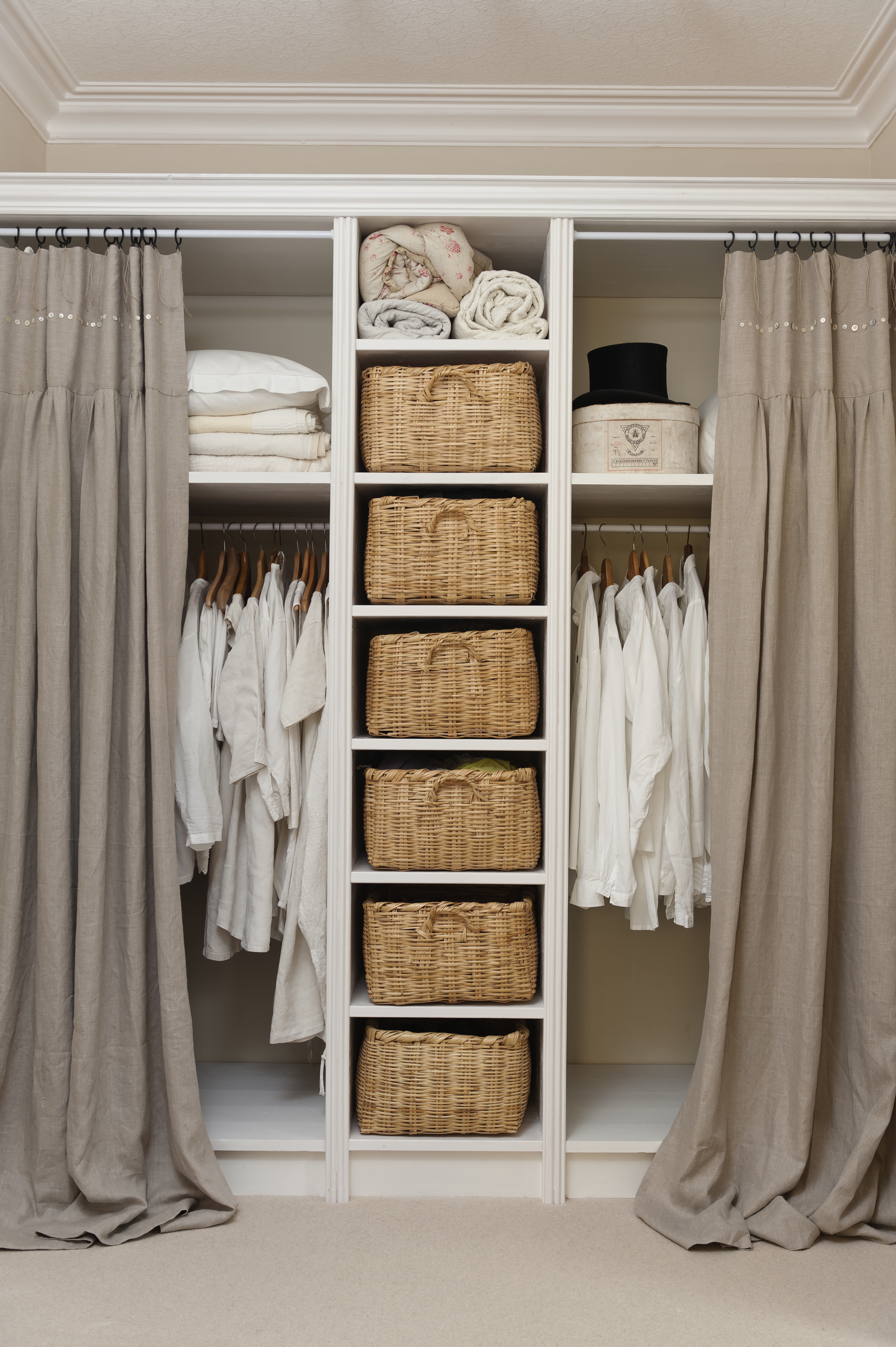
Decluttering means addressing and asking yourself if you need certain items in your life and if they still hold value in your space. When it comes to clothing, Di says you should ask yourself the following questions to keep your closet in check.
"Ask yourself: Do I love it? Do I wear it often? Does it fit my current lifestyle? Does it make me feel confident? Would I buy it if I was at the store now?" And last but not least, "Do I have something similar that I like and wear more often?."
7. Limit Sentimental Items
There is a simple decluttering trick to help you let go of stuff and downsize. One form of downsizing may be by removing your everyday gear from the sentimental items and putting them in completely different places.
Di says when it comes to sentimental items, ensure you store them in a separate space from your wardrobe — this will help stop overcrowding and clutter.
"While it's okay to keep a few sentimental pieces, be selective," the expert adds. "Choose a small box or a designated area for these items to prevent them from taking over your wardrobe."
8. Maintain Your Wardrobe
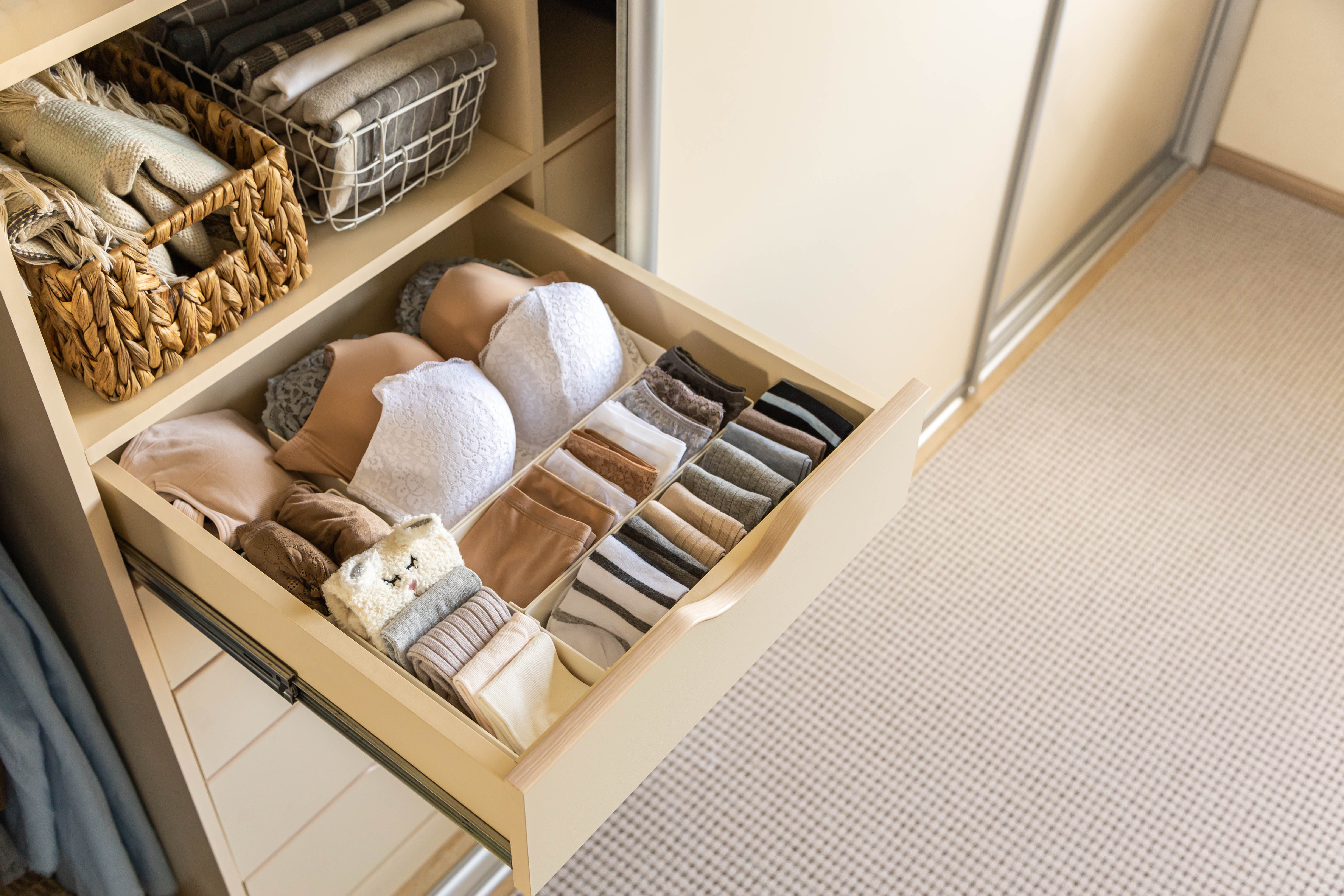
Understanding how to declutter room by room will allow you to free your mind as well as your home. As we've established, tackling the pile of clothing is a great place to start.
The organization expert says once you have decluttered your clothes, you'll need to maintain it as "decluttering isn't a one-time task." Di says you should always check back with your wardrobe and analyse the space to make sure it remains neat and tidy throughout the course of its use.
She adds: "Regularly review your wardrobe to keep it organized and clutter-free. A seasonal review helps you stay on top of your clothing needs and preferences."
9. Be Mindful of Future Purchases
Window shopping can often lead to "add to cart," but Di says you need to be extra mindful with the purchases you make. You would not want to spend your time clearing out a space, only to add more and more into it — which can in turn lead to clutter and waste.
To avoid future clutter, Di says to be more intentional with your shopping. "Before buying something new, consider if it fits your current wardrobe and style," she notes. "Ask yourself if you really need it and if it will be used regularly."
10. One In, One Out Rule
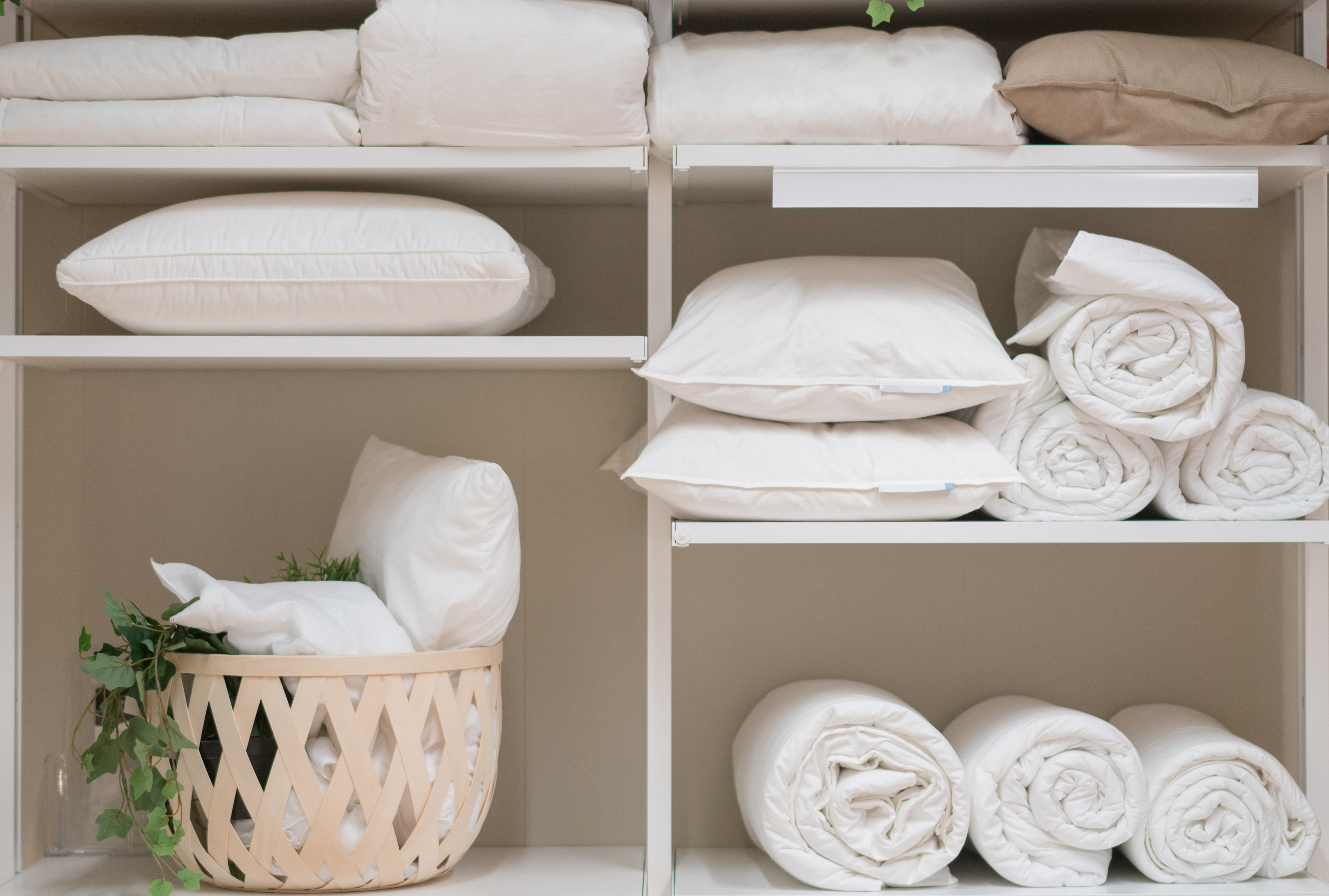
The one in and one out rule is just one of the things professional organizers do daily. It's a great way limit waste, while also teaching you to let go of something in order to bring something new into a space.
Di tells us: "To maintain a clutter-free wardrobe, adopt the one in, one out rule. For every new item you bring in, let go of an existing one." This in turn helps prevent your closet from becoming overcrowded and cluttered.
Where to Start When Decluttering Clothes?
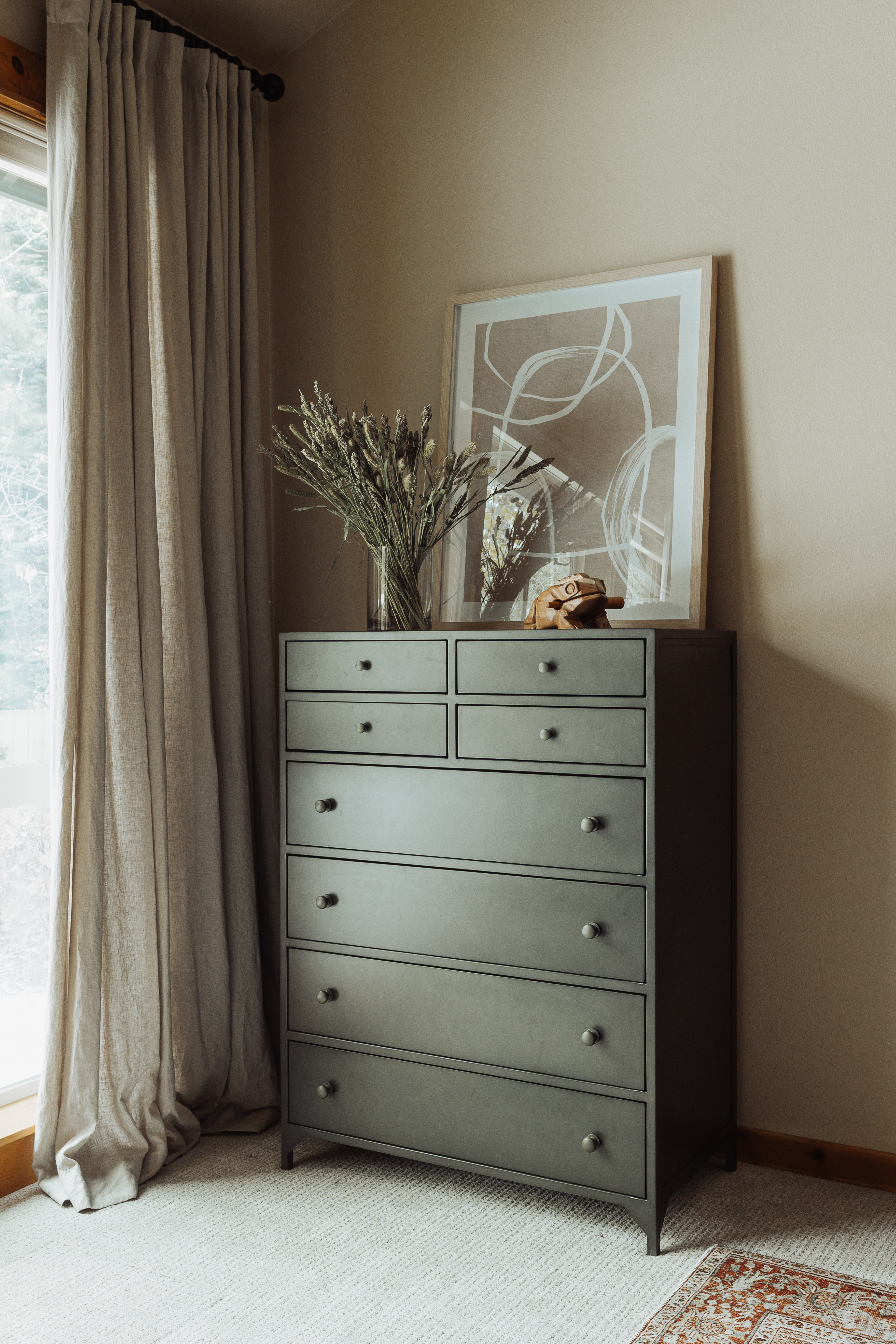
There are many reasons clutter can linger into your wardrobe. Whether it's attachment or guilt — learning how to overcome this will allow you to let go and declutter. The journey towards decluttering can be quite overwhelming, so where do you even start?
Well, Di says, "when you're ready to start decluttering your clothes, here's a game plan. First, clear out a space where you can spread everything out and sort it comfortably. Get some bags or boxes ready for items you want to donate, sell, or toss."
The expert advises that you start with easy items — those worn-out, damaged, or ill-fitting pieces. She continues: "Once you've tackled that, move on to sorting by specific categories like tops, bottoms, and outerwear. Don't forget to check if your closet setup is helping you stay organized or if it needs a little revamp."
By following these steps, Di says "you'll create a wardrobe that's not only clutter-free but also totally reflects your lifestyle and needs."
FAQS
What can cause a wardrobe to become cluttered in the first place?
Clutter can accumulate overtime, but before we let that happen — we need to assess the route cause of the issue.
Di tells us: "A wardrobe can become cluttered for several reasons, one of them being emotional attachments, which often lead us to keep clothes that have sentimental value or bring back memories. Feeling guilty about the money spent on clothes can make it hard to let them go, even if we don't wear them anymore."
She continues: "We also see a lot of clothes in wardrobes being saved because of weight changes, resulting in keeping multiple sizes of clothing 'just in case'. Finally, a lack of organization makes it hard to see what we have, leading to duplicates you forget you had or couldn't find."
Expert advice On letting go of items
There are many things we need to let go of in order to have a cleaner space, but how do we do that?
"If you're having a hard time letting go of clothes, you can focus on the benefits—think about how decluttering will give you more space, reduce stress, and make your wardrobe really reflect who you are," Di highlights. "You can also start small by tackling less sentimental items first and then work your way up to the more challenging decisions. It can be really helpful to get support from a friend or a professional organizer who can offer some emotional backing and a fresh perspective."
Another option Di recommends is to take photos to keep the memories, rather than the physical item — which can help you let go. "If you're still unsure, put the clothes you're hesitating about into one drawer or box and label it with a date six months later," Di adds. "If you haven't pulled anything out of that box by then, it's time to donate them without any guilt."
Learn to Declutter Your Home With These Great Reads
Price: $17.56
Type: Hardcover
Price: $11.20
Type: Hardcover
Price: $9.41
Type: Hardcover







